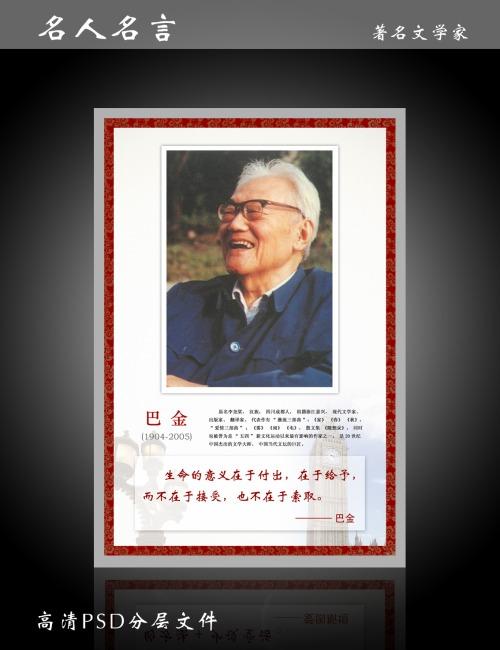
英语五种基本句型结构
一、 句型1: Subject (主语) + Verb (谓语)
这种句型中的动词大多是不及物动词,所谓不及物动词,就是这种动词后不可以直接
接宾语。常见的动词如:work, sing, swim, fish, jump, arrive, come, die, disappear, cry,
happen等。如:
1) Li Ming works very hard.李明学习很努力。
2) The accident happened yesterday afternoon.事故是昨天下午发生的。
3)Spring is coming.
4) We have lived in the city for ten years.
二、句型2:Subject (主语) + Link. V(系动词) + Predicate(表语)
这种句型主要用来表示主语的特点、身份等。其系动词一般可分为下列两类:
(1)表示状态。这样的词有:be, look, em, smell, taste, sound, keep等。如:
1) This kind of food tastes delicious.这种食物吃起来很可口。
2) He looked worried just now.刚才他看上去有些焦急。
(2)表示变化。这类系动词有:become, turn, get, grow, go等。如:
1) Spring comes. It is getting warmer and warmer.春天到了,天气变得越来越暖和。
2) The tree has grown much taller than before.这棵树比以前长得高多了。
三、句型3:Subject(主语) + Verb (谓语) + Object (宾语)
这种句型中的动词一般为及物动词, 所谓及物动词,就是这种动词后可以直接接宾语,
其宾语通常由名词、代词、动词不定式、动名词或从句等来充当。例:
1) He took his bag and left.(名词) 他拿着书包离开了。
2) Li Lei always helps me when I have difficulties. (代词)当我遇到困难时,李雷总能给我
帮助。
3) She plans to travel in the coming May Day.(不定式)她打算在即将到来的“五一”外出
旅游。
4) I don’t know what I should do next. (从句)我不知道下一步该干什么。
注意:英语中的许多动词既是及物动词,又是不及物动词。
四、句型4: Subject(主语)+Verb(谓语)+ Indirect object(间接宾语)+Direct
object (直接宾语)
这种句型中,直接宾语为主要宾语,表示动作是对谁做的或为谁做的,在句中不可或
缺,常常由表示“物”的名词来充当;间接宾语也被称之为第二宾语,去掉之后,对整个
句子的影响不大,多由指“人”的名词或代词承担。引导这类双宾语的常见动词有:buy,
pass, lend, give, tell, teach, show, bring, nd等。如:
1) Her father bought her a dictionary as a birthday prent.她爸爸给她买了一本词典作为生
日礼物。
2)The old man always tells the children stories about the heroes in the Long March.
老人经常给孩子们讲述长征途中那些英雄的故事。 上述句子还可以表达为:
1)Her father bought a dictionary for her as a birthday prent.
2)The old man always tells stories about the heroes to the children in the Long March.
五、句型5: Subject(主语)+Verb (动词)+Object (宾语)+Complement(补语)
这种句型中的“宾语 + 补语”统称为“复合宾语”。宾语补足语的主要作用或者是补充、
说明宾语的特点、身份等;或者表示让宾语去完成的动作等。担任补语的常常是名词、
形容词、副词、介词短语、分词、动词不定式等。如:
1)You should keep the room clean and tidy. 你应该让屋子保持干净整洁。(形容词)
2) We made him our monitor.(名词)我们选他当班长。
3) His father told him not to play in the street.(不定式)他父亲告诉他不要在街上玩。
4)My father likes to watch the boys playing basketball.(现在分词)
5) Yesterday I had a picture taken with two Americans.(过去分词)
● 常见的动词有: tell, ask, advi, help, want, would like, order, force, allow等。
● 注意:动词have, make, let, e, hear, notice, feel, watch等后面所接的动词不定式作宾
补时,不带to。如:
1) The boss made him do the work all day.老板让他整天做那项工作。
2) I heard her sing in the next room all the time last night.昨天晚上我听见她在隔壁唱了一
个晚上。
八大词类
1名词:名词是表示人,事物,地点或抽象概念的名称
Eg ; Boy girl children people
She eats an apple every day.
I bought a dozen eggs in the market.
2动词:表示动作或动作中状态的词叫做动词
实义动词(Notional Verb)、系动词(Link Verb)、助动词(Auxiliary Verb)、情
态动词,还可以分成及物动词和不及物动词().
缩写形式分别为vt. 和vi.
Eg ; She can dance and sing.
她能唱歌又能跳舞。(sing在此用作不及物动词。)
She can sing many English songs.
她能唱好多首英文歌曲。(sing用作及物动词。)
动词有五种形态
原形(Original Form)、第三人称单数形式(Singular Form in Third Personal)、
过去式(Past Form)、过去分词(Past Participle)、现在分词(Prent Participle)。
动词的基本形式
绝大多数动词都有五种基本形式:动词原形、一般现 在是第三人称单数、过去时、过去
分词和现 在分词。
A、 第三人称单数形式的构成
一般现在时主语是第三人称单数,谓语动词后要加s或es,其变化规则与名词变复数的
方法大体相同:
⒈一般情况下只在动词后加s,如work-works,write-writes。
⒉以s,x,sh,ch结尾的动词,后加es,如guess-guess,mix-mix,finish-finishes,catch-catches。
⒊以辅音字母加y结尾的动词,改y为i,如study-studies。
注:不规则变化的有have-has,be-are,go-goes,do-does等。
B、 现在分词的构成
⒈一般情况下在动词后加ing,如study-studying,work-working。
⒉以不发音的字母e结尾的动词,去“e”再加“ing”,如write-writing,move-moving。
⒊以一个元音字母和一个辅音结尾的重读音节结尾的动词,要双写最后字母再加“ing”,
如get-getting,begin-beginning。
⒋以ie结尾的动词,一般将ie改为y,再加ing,如lie-lying,die-dying,tie-tying。
注:以I结尾的动词,尾音节重读时,双写I,如control-controlling;尾音节不重读时,
双不双写都可以,如 travel-traveling(美)/travelling(英)。
C、过去式的构成
⒈一般情况直接加ed,如ask-asked,work-worked。
⒉以不发音的e结尾,只加d,如love-loved,dance-danced。
⒊以辅音字母加y结尾,把y改i,如try-tried,study-studied。
⒋以一个元音字母和一个辅音结尾的重读音节结尾的动词,先双末尾一个字母,再加ed,
如stop-stopped,permit-permitted
动词分类
类别 说明 例句
She has a new friend 行为动词 Action 表示动作或状态,在句
from Australia. He Verbs 中能独立作谓语。
takes the train every day.
He leaves for school at
around ven.
He is popular in school. 连系动词 Link Verbs 不能独立作谓语,必须
Twins usually look the 与表语一起构成谓语。
same. Trees turn
green in spring.
I don't want to go for 助动词 Auxiliary 不能独立作谓语,只能
adrive.(否定) We Verds 作主要动词一起构成谓
are playing basketball.语,表示否定、 疑
问、时态或其他语法形(进行时态) Do
式。 you speak a little
情态动词 Modality 不能独立作谓语,只能She can speak a little
Verbs 和主要动词一起构成谓English. You should
语,表示说话人 的drink more water.
语气情态。情态动词没
有人称和数量的变化。
tomatoes ?(疑问)
[1]
一般现在时的用法
1) 表示经常性或习惯性的动作,常与表示频度的时间状语连用。
时间状语:every…,sometimes, at…,on Sunday,always,every
day,usually,ldom
I leave home for school at 7 every morning.
2) 在时间和条件状语中代替将来、表示按规定将要发生的事情(动作)
状态和感觉的动作
If you come this afternoon,we will have a meeting.
3) 表示格言或警句中。
Pride goes before a fall. 骄者必败。
注意:此用法如果出现在宾语从句中,即使主句是过去时,从句谓语也要
用一般现在时。
例:Columbus proved that the earth is round..
4) 现 在时刻的状态、能力、性格、个性。
I don't want so much.
Ann Wang writes good English but does not speak well.
比较:Now I put the sugar in the cup.
I am doing my homework now.
第一句用一般现在时,用于操作演示或指导说明的示范性动作,表示言行
的瞬间动作。再如:Now watch me,I switch on the current and stand back. 第
二句中的now是进行时的标志,表示正在进行的动作的客观状况,所以后
句用现在进行时。
一般过去时的用法
1)在确定的过去时间里所发生的动作或存在的状态。
时间状语有:yesterday,last week,an hour ago,the other day,in 1982等。
Where did you go just now
2)表示在过去一段时间内,经常性或习惯性的动作。
When I was a child,I often played football in the street.
Whenever the Browns went during their visit,they were given a warm
welcome.
3)句型:
It is time for sb. to do sth "到……时间了" "该……了"
It is time sb. did sth. "时间已迟了" "早该……了"
It is time for you to go to bed. 你该睡觉了。
It is time you went to bed. 你早该睡觉了。
would (had) rather sb. did sth. 表示'宁愿某人做某事'
I'd rather you came tomorrow.
4) wish,wonder,think,hope 等用过去时,作试探性的询问、请求、建议等。
I thought you might have some. 我以为你想要一些。
比较:
一般过去时表示的动作或状态都已成为过去,现已不复存在。
Christine was an invalid all her life.
(含义:她已不在人间。)
Christine has been an invalid all her life.
(含义:她现 在还活着)
Mrs. Darby lived in Kentucky for ven years.
(含义:达比太太已不再住在肯塔基州。)
Mrs. Darby has lived in Kentucky for ven years.
(含义:现 在还住在肯塔基州,有可能指刚离去)
注意:用过去时表示现 在,表示委婉语气。
1)动词want,hope,wonder,think,intend 等。
Did you want anything el
I wondered if you could help me.
2)情态动词 could,would.
Could you lend me your bike?
ud to / be ud to
ud to + do:"过去常常"表示过去习惯性的动作或状态,但如今已不存在。
Mother ud not to be so forgetful.
be ud to + doing:对……已感到习惯,或"习惯于",to是介词,后需加名
词或动名词。
He is ud to a vegetarian diet.
Scarf is ud to taking a walk.(现 在习惯于散步)
一般将来时
1) shall用于第一人称,常被will 所代替。
will 在陈述句中用于各人称,在争求意见时常用于第二人称。
Which paragraph shall I read first.
Will you be at home at ven this evening
2) be going +不定式,表示将来。
a.主语的意图,即将做某事。
What are you going to do tomorrow
b. 计划,安排要发生的事。
The play is going to be produced next month。
c. 有迹象要发生的事
Look at the dark clouds,there is going to be a storm.
3) be +不定式表将来,按计划或正式安排将发生的事。
We are to discuss the report next Saturday.
4) be about +不定式,意为马上做某事。
He is about to leave for Beijing.
注意:be about to 不能与tomorrow,next week 等表示明确将来时的时间状
语连用。
be going to / will
用于条件句时, be going to 表将来
will 表意愿
If you are going to make a journey,you'd better get ready for it as soon as
possible.
Now if you will take off your clothes,we will fit the new clothes on you in front
of the mirror.
be to和be going to
be to 表示客观安排或受人指示而做某事。
be going to 表示主观的打算或计划。
I am to play football tomorrow afternoon. (客观安排)
I'm going to play football tomorrow afternoon. (主观安排)
一般现在时表将来
1)下列动词:come,go,arrive,leave,start,begin,return的一般现在时表将来。
这主要用来表示在时间上已确定或安排好的事情。
The train leaves at six tomorrow morning.
When does the bus start? It starts in ten minutes.
2)倒装句,表示动作正在进行,如:
Here comes the bus. = The bus is coming.
There goes the bell. = The bell is ringing.
3)在时间或条件句中。
When Bill comes (不是will come),ask him to wait for me.
I'll write to you as soon as I arrive there.
4)在动词hope,take care that,make sure that等后。
I hope they have a nice time next week.
Make sure that the windows are clod before you leave the room.
用现在进行时表示将来
意为:"意图"、"打算"、"安排"、常用于人。常用词为
come,go,start,arrive,leave,stay等。
I'm leaving tomorrow.
Are you staying here till next week
现在完成时
现在完成时用来表示之前已发生或完成的动作或状 态,其结果的确和现
在有联系。动作或状态发生在过 去 但它的影响现 在还存在;也可表示
持续到现 在的动作或 状态。其构成:have (has) +过去分词。
用于现在完成时的句型
1)It is the first / cond time…. that…结构中的从句部分,用现在完成时。
It is the first time that I have visited the city.
It is the third time that the boy has been late.
2)This is the… that…结构,that从句要用现在完成时.
This is the best film that I've (ever) en.
这是我看过的最好的电影。
This is the first time (that) I've heard him sing. 这是我第一次听他唱歌。
3)最基本句型
主语+have/has+(already/just)+动词的过去分词+其他
比较since和for
Since 用来说明动作起始时间,for用来说明动作延续时间长度。
I have lived here for more than twenty years.
I have lived here since I was born..
My aunt has worked in a clinic since 1949.
Some new oilfields have been opened up since 1976.
I have known Xiao Li since she was a little girl.
My brother has been in the Youth League for two years.
I have not heard from my uncle for a long time.
注意:并非有for 作为时间状语的句子都用现在完成时。
I worked here for more than twenty years.
(我现 在已不在这里工作。)
I have worked here for many years.
(现 在我仍在这里工作。)
小窍门:当现在完成时+一段时间,这一结构中,我们用下面的公式转化,
很容易就能排除非延续动词在完成时中的误使。
1) (对) Tom has studied Russian for three years.
= Tom began to study Russian three years ago,and is still studying it now.
2) (错) Harry has got married for six years.
= Harry began to get married six years ago,and is still getting married now.
显然,第二句不对,它应改为 Harry got married six years ago. 或 Harry has
been married for six years.
since的四种用法
1) since +过去一个时间点 (如具体的年、月、日期、钟点、1980,last
month,half past six)。
I have been here since 1989.
2) since +一段时间+ ago
I have been here since five months ago.
3) since +从句
Great changes have taken place since you left.
Considerable time has elapd since we have been here.
4) It is +一段时间+ since从句
It is two years since I became a postgraduate student.
5)since和for
在现在完成时态,since后面加时间点,for后面加时间段。
延续动词与瞬间动词
1) 用于完成时的区别
延续动词表示经验、经历;瞬间动词表示行为的结 果,不能与表示段的
时间状语连用。
He has completed the work. 他已完成了那项工作。(表结果)
I've known him since then. 我从那时起就认识他了。(表经历)
2) 用于till / until从句的差异
延续动词用于肯定句,表示"做……直到……" 瞬间动词用于否定句,表示
"到……,才……"
He didn't come back until ten o'clock.
他到10 点才回来。
He slept until ten o'clock.
他一直睡到10点。
现在进行时
现在进行时的基本用法:
a. 表示现 在(指说话人说话时) 正在发生的事情。
We are waiting for you.
b. 习惯进行:表示长期的或重复性的动作,说话时动作未必正在进行。
Mr. Green is writing another novel.
(说话时并未在写,只处于写作的状态。)
She is learning piano under Mr. Smith.
c. 表示渐变的动词有:get,grow,become,turn,run,go,begin等。
The leaves are turning red.
It's getting warmer and warmer.
d. 与always,constantly,forever 等词连用,表示反复发生的动作或持续存在
的状态,往往带有说话人的主观色彩。
You are always changing your mind.
不用进行时的动词
1) 事实状态的动词
have,belong,posss,cost,owe,exist,include,contain,matter,weigh,measure,conti
nue
I have two brothers.
This hou belongs to my sister.
2) 心理状态的动词
Know,realize,think
e,believe,suppo,imagine,agree,recognize,remember,want,need,forget,prefer
,mean,understand,love,hate
I need your help.
He loves her very much.
⒊) 瞬间动词
accept,receive,complete,finish,give,allow,decide,refu.
I accept your advice.
4) 系动词
em,remain,lie,e,hear,smell,feel,taste,get,become,turn
You em a little tired.
3、形容词:形容词用来修饰名词或代词, 表示人或事物的性质, 状态,和特
征。
形容词(adjective),简称adj.或a.,很多语言中均有的主要词类中的一种。
主要用来修饰名词的词,表示事物的特征。
形容词用来修饰名词或代词, 表示人或事物的性质, 状态,和特征。 在
句中作定语, 表语, 宾语,补语。
形容词在句中作定语,表语,宾语补足语。
她是一个好学生,她学习努力。She is a good student, and she works hard.
这辆自行车很贵。This bike is expensive.
对不起,我现在很忙。. Sorry,I'm all tied up right now
你为这次会议做好准备了吗? Have you got everything ready for the meeting?
在句中的位置
[1] 形容词作定语一般放在被修饰的名词之前。如果有两个或两个以上的
形容词修饰一个名词时,则由它们和被修饰的名词之间的密切程度而定,
越密切的形容词越靠近名词。如果几个形容词的密切程度差不多则按音节
少的形容词放在前面,音节多的形容词放在后面。
英语单词中something, anything, nothing 等不定代词被形容词修饰时,形
容词放在不定代词后面。
I have something important to tell you.
我有重要的事要告诉你。
Is there anything interesting in the film?
电影里有什么有趣的内容吗?
There is nothing dangerous here.
这儿一点都不危险。
由两个或两个以上的词组成的形容词词组修饰名词时须放在名词之后。
This is the book easy to read.
这是一本容易读的书。
4、副词:副词是一种用来修饰动词,形容词,副词或全句的词,说明时间,地
点,程度,方式等概念。
副词在句中可作状语,表语,补语,定语。
He works hard. (作状语)
他工作努力。
You speak English very well. (作状语)
你英语讲地相当好。
Does she stay at home? (作表语)
她呆在家吗?
Let's be out. (作表语)
让我们出去吧。
Food here is hard to get. (here作定语,hard作状语)
这儿很难弄到食物。
Let him out!(作补语)
让他出去!
.修饰名词的副词放在被修饰词之后
a. The villagers there are busy getting in wheat.
5、介词:介词是一种用来表示词与词, 词与句之间的关系的词。在句中不
能单独作句字成分。介词后面一般有名词代词或相当于名词的其他词类,
短语或从句作它的宾语。介词和它的宾语构成介词词组,在句中作状语,
表语,补语或介词宾语。
6、连词:连词是一种虚词, 它不能独立担任句子成分而只起连接词与词,
短语与短语以及句与句的作用。连词主要可分为两类:并列连词和从属连
词。
7、代词:代词是代替名词的一种词类。大多数代词具有名词和形容词的功能。英语中的代
词,按其意义、特征及在句中的作用分为:人称代词、物主代词、指示代词、反身代词、相
互代词、疑问代词、关系代词和不定代词八种。
8、冠词:冠词是虚词,本身不能单独使用,也没有词义,它用在名词的前面,帮助指明名词的含
义。冠词可以说是名词的一种标志,它不能离开名词而独立存在。 冠词分为不定冠词a,an、
定冠词the和零冠词三种,零冠词指的是不用冠词的情况。不定冠词表示泛指,定冠词表示
特指。不定冠词有a和an两种形式。a用在以辅音开头的词前,an用在以元音开头的词前。
判断一个词是以元音开头还是以辅音开头,是根据读音而不是根据字母。

本文发布于:2023-05-26 07:24:04,感谢您对本站的认可!
本文链接:https://www.wtabcd.cn/zhishi/a/1685057045179491.html
版权声明:本站内容均来自互联网,仅供演示用,请勿用于商业和其他非法用途。如果侵犯了您的权益请与我们联系,我们将在24小时内删除。
本文word下载地址:英语五种基本句型结构.doc
本文 PDF 下载地址:英语五种基本句型结构.pdf
| 留言与评论(共有 0 条评论) |